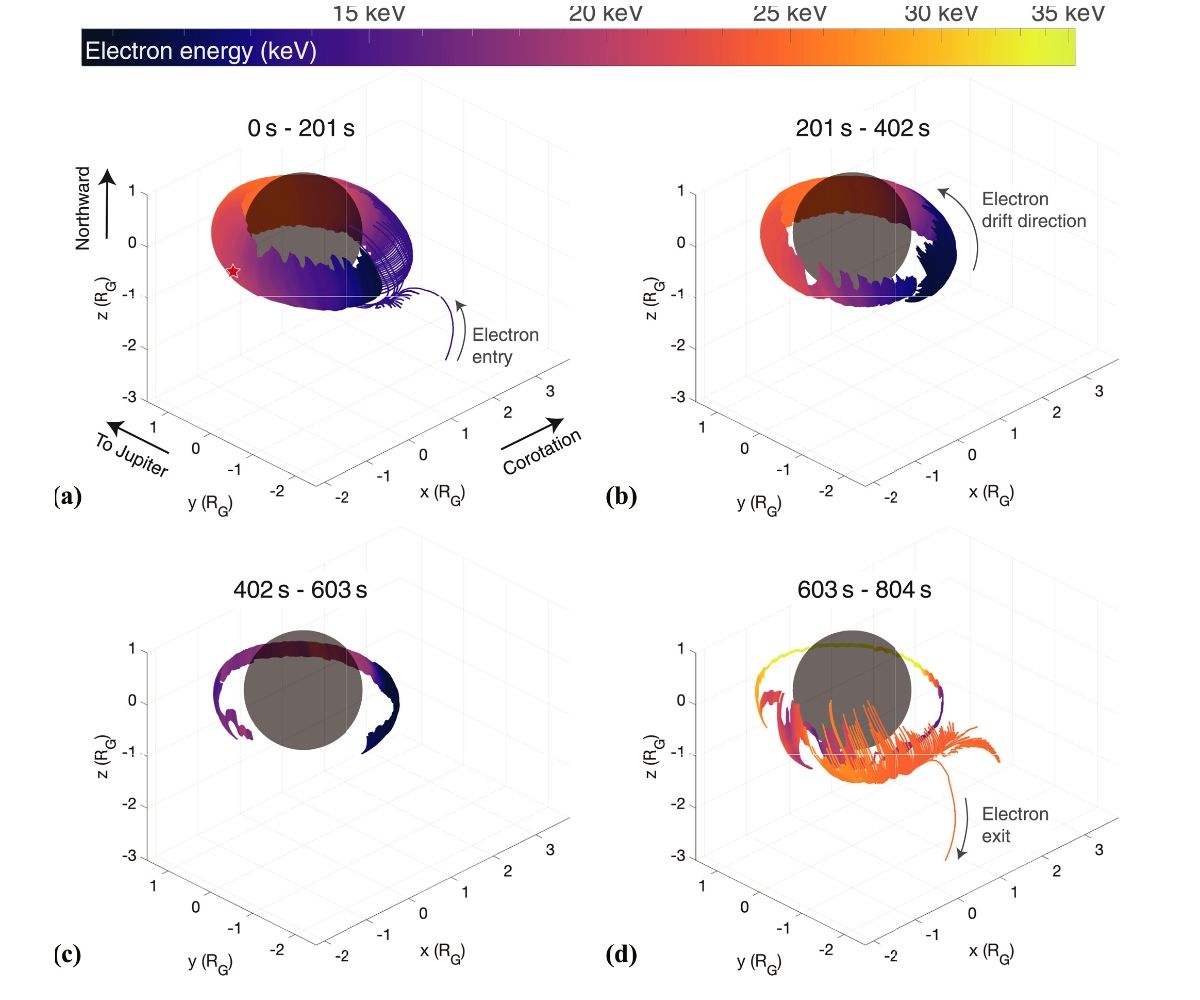Follow us on Google News (click on ☆)

Trajectory of an electron orbiting the moon Ganymede, remaining thus trapped.
© Liuzzo et al. (2024)
To better understand the mechanisms behind the formation of planetary radiation belts, a team led by the University of Berkeley and including scientists from CNRS Terre & Univers turned to Ganymede, the largest moon in the Solar System, orbiting Jupiter. This satellite has a magnetic field strong enough to create a mini magnetosphere nested within Jupiter's, but can it have its own radiation belts?
To find out, the researchers dug up data acquired by NASA's Galileo probe during its flyby of Ganymede on May 20, 2000. After a new analysis of the energetic electrons detected by the probe, the researchers showed that the particle fluxes reach a maximum in directions perpendicular to the local magnetic field.
This type of distribution is called a "pancake." The result shows that pancake electrons come from electrons trapped around Ganymede, confirming the existence of radiation belts around the icy moon! After a few orbits of Ganymede, particles from Jupiter's magnetosphere can either return to it or impact the moon's surface.
This new analysis of old Galileo data informs us about what the JUICE mission from ESA, en route to the Jupiter system, will be able to explore. JUICE will enter a low polar orbit around Ganymede in 2033. It will then provide a complete 3D map of the radiation belts around the icy moon and study the underlying physical processes in detail to better understand this phenomenon discovered thanks to Galileo.
Reference:
Liuzzo, L., Nénon, Q., Poppe, A. R., Stahl, A., Simon, S., & Fatemi, S. (2024).
On the formation of trapped electron radiation belts at Ganymede.
Geophysical Research Letters, 51, e2024GL109058. https://doi.org/10.1029/2024GL109058.